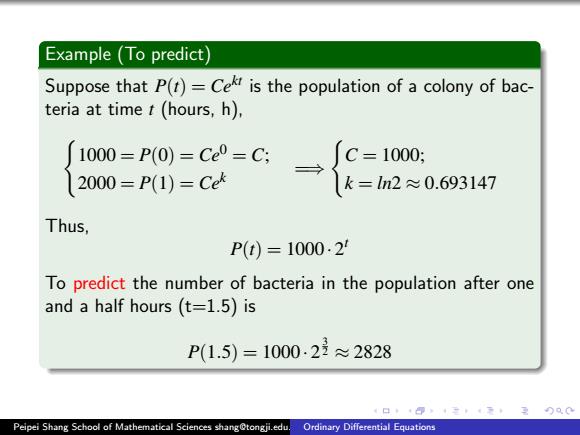正在加载图片...

Example (To predict) Suppose that P(t)=Cekr is the population of a colony of bac- teria at time t(hours,h), 1000=P(o)=Ce0=C; C=1000: 12000=P(1)=Ce 1k=ln2≈0.693147 Thus, P(t)=1000.2 To predict the number of bacteria in the population after one and a half hours (t=1.5)is P(1.5)=1000-22≈2828 4口14①y至元2000 Peipei Shang School of Mathematical Sciences shang@tongji.edu.Ordinary Differential EquationsExample (To predict) Suppose that P(t) = Cekt is the population of a colony of bacteria at time t (hours, h), ( 1000 = P(0) = Ce0 = C; 2000 = P(1) = Cek =⇒ ( C = 1000; k = ln2 ≈ 0.693147 Thus, P(t) = 1000 · 2 t To predict the number of bacteria in the population after one and a half hours (t=1.5) is P(1.5) = 1000 · 2 3 2 ≈ 2828 Peipei Shang School of Mathematical Sciences shang@tongji.edu.cn Ordinary Differential Equations